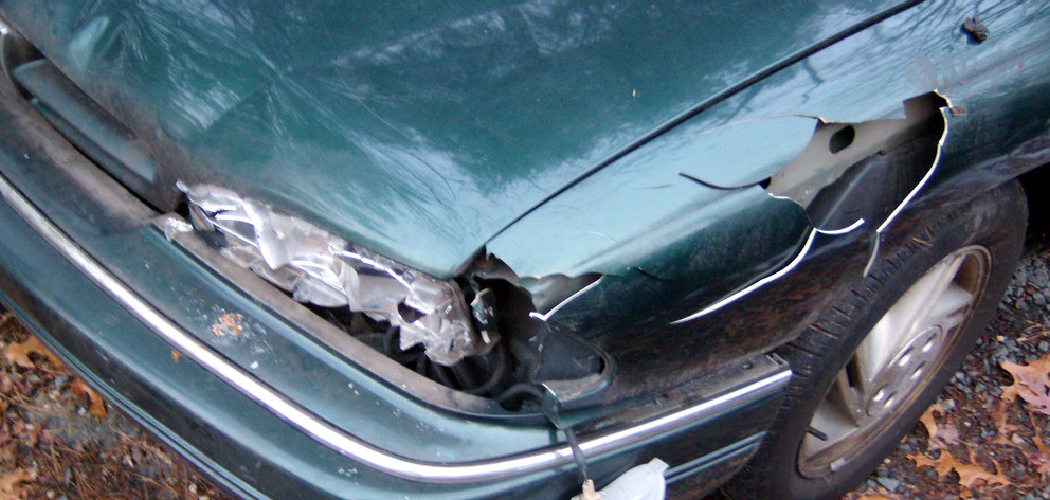Your car’s bumper is one of those unassuming parts that doesn’t often get a second thought until something goes wrong. In the event of a minor fender bender or even a hard curb nudge, your bumper’s integrity can be compromised. But how to tell if your bumper is damaged? This comprehensive guide will help you decipher the signs of bumper damage and what you should do next.
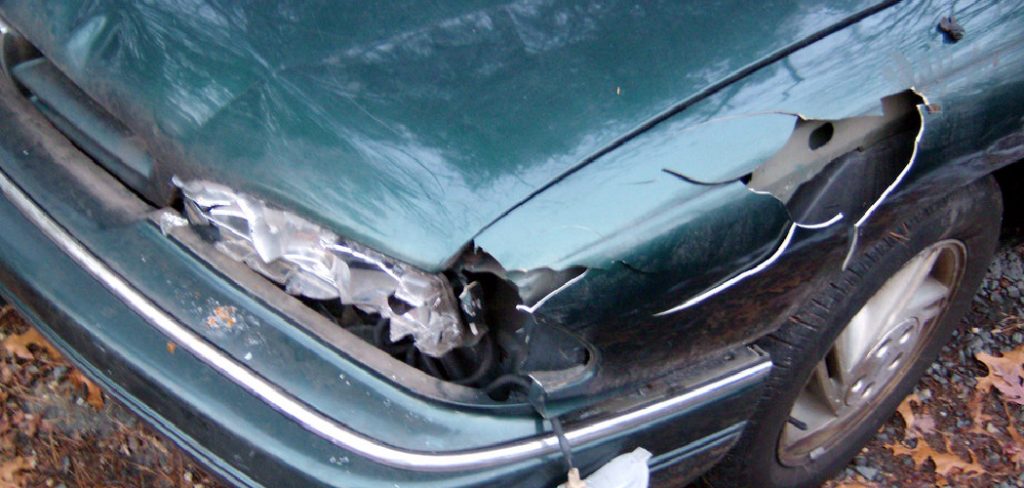
Why Is It Important to Identify if Your Bumper Is Damaged?
Identifying if your bumper is damaged is important for several reasons. First and foremost, a damaged bumper can affect the overall safety of your vehicle. Bumpers are designed to absorb impact and protect both you and your car in the event of a crash. If your bumper is damaged, it may not be able to perform this function properly, leaving you vulnerable in case of an accident.
Another reason to identify bumper damage is that it can lead to further issues if left unchecked. A small crack or dent on the surface of your bumper may not seem like a big deal, but it can allow moisture and other debris to seep into the underlying layers of your car’s body, potentially causing rust and corrosion over time.
Lastly, having a damaged bumper can also affect the value of your car. If you plan on selling or trading in your vehicle in the future, a damaged bumper can significantly decrease its worth.
How to Tell if Your Bumper Is Damaged: A Car Owner’s Guide
1. Visual Inspection: Seeing the Signs
The first step in diagnosing bumper damage is a visual examination. Look out for any scratches, dents, or cracks on the surface. These can be telltale signs of an impact, even if it is a minor one. It’s crucial to examine the front and rear bumpers and the sides, as any part of the bumper can get hit during parking or tight maneuvers.
A scratch might seem like a cosmetic issue, but it can lead to rust over time, weakening the metal. Similarly, a crack that looks minor at first might grow with time, and an unseen impact could cause further damage.
2. Functional Assessment: Bumper Behaviors to Watch
Functionality is key to safety and performance. An impaired bumper may not protect you as it should in another accident. Check the alignment of your bumper; if it appears crooked or not flush with the rest of the car, there’s a high chance it has sustained damage.
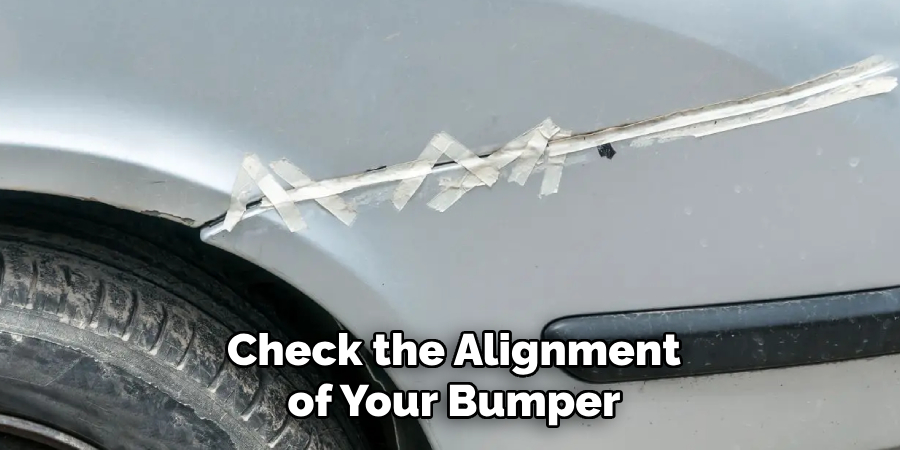
Also, take note of any looseness or jiggle in the bumper. It may be disconnected or hanging by the bare minimum if it moves independently of the vehicle. Bumpers should be securely fastened to the vehicle structure to provide the intended level of impact protection.
Lastly, if you experience difficulty in opening or closing your trunk, it could be due to a damaged bumper. Trunks that don’t operate smoothly could hint at larger structural problems related to the bumper attachment points or even the frame.
Safety Considerations: Beyond the Surface
Bumpers aren’t just a shield for fender benders; they’re an integral part of your vehicle’s safety system. In modern cars, bumpers are designed to absorb the force of a collision and minimize the impact on the passengers within the cabin.
During an evaluation of your bumper, consider how any visible or suspected damage could interfere with this crucial role. Issues with airbag deployment, misalignment of safety sensors, or even structural damage to the car’s frame can all stem from bumper issues. Any of these problems diminish your vehicle’s ability to protect in the case of another accident.
DIY Assessment: Simple Checks Any Car Owner Can Do
Here are some straightforward tests you can perform to evaluate your bumper:
- Push Test: Apply gentle pressure to different areas of the bumper. It should feel firm and have consistent resistance. Any ‘give’ or unusual softness indicates a problem.
- Visual Inspection: Step back and look at the bumper from different angles, noting any inconsistencies in shape or fit.
- Listen for Sounds: If you hear creaking or scraping sounds when encountering a bump or turning, these could be associated with a loose bumper.
These checks won’t provide a definitive diagnosis, but they will give you an idea of whether further investigation is necessary.
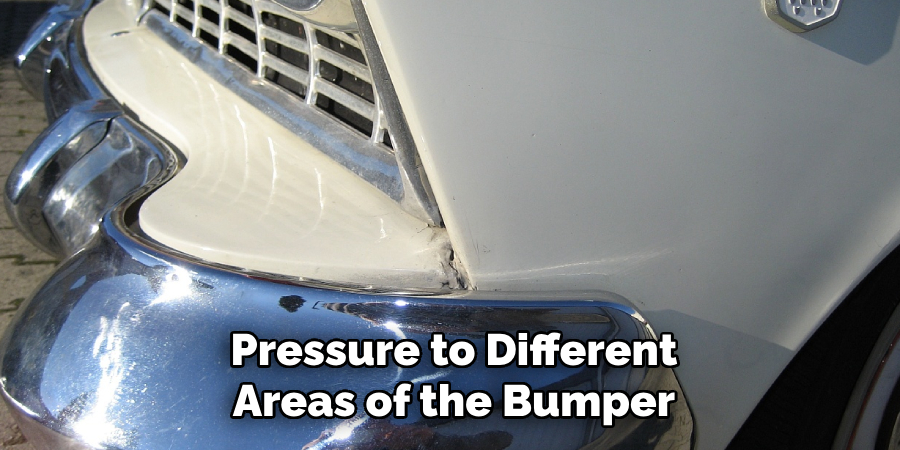
Seeking a Professional Assessment: The Importance of Expertise
While a DIY inspection can be informative, nothing beats the trained eye of a professional mechanic or body shop technician. They have the experience, tools, and knowledge to diagnose and fix bumper problems correctly.
By enlisting professional help, you can avoid misdiagnosing issues or inadvertently causing additional damage due to a lack of expertise. In the long run, this can save you time and money and ensure your safety.
The Stakes: Consequences of Ignoring Bumper Damage
It can be tempting to ignore or procrastinate addressing bumper issues. After all, you might think, “It’s just my bumper.” However, as we’ve detailed, the stakes are high. A neglected bumper can lead to a plethora of concerns, from safety risks to potential fines for unroadworthy vehicles.
Moreover, ignoring damage can exacerbate problems that could have been easily corrected if caught early. For example, a minor crack in your bumper’s cover may allow water into the bumper structure, causing corrosion over time.
It’s important to note the repair or replacement of a modern bumper isn’t just an aesthetic choice or an optional enhancement; it’s critical maintenance for the safety and longevity of your vehicle.
4 Common Mistakes People Make When Identifying if a Bumper Is Damaged
Your car’s bumper is like the unsung hero of your vehicle. It takes on the unpaved roads, the occasional bump in a parking lot, and the pressures of daily use, all in the name of protecting your vehicle and you. But even these steadfast protectors can come under damage.
Identifying damage to your bumper is crucial for both the aesthetics and safety of your vehicle. However, many car owners and enthusiasts make common mistakes when assessing bumper damage. Let’s explore what they are and how to avoid them.
1. Relying on Visual Inspection Alone
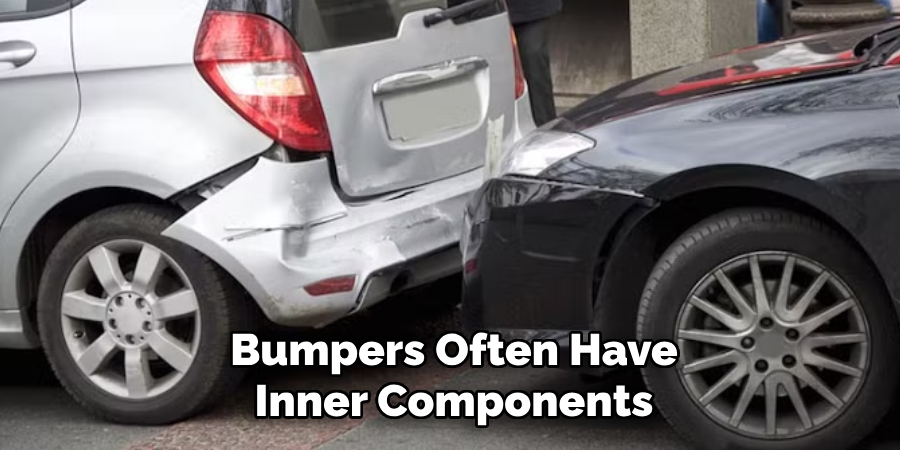
When people think a bumper may be damaged, the first thing they do is give it a once-over. While this is an important step, relying solely on what you can see casually can lead to overlooking less obvious issues. Bumpers often have inner components, such as energy absorbers and brackets, that can be damaged without any visible signs on the exterior.
Understanding Hidden Impact
The purpose of any bumper is to absorb impact and protect the occupants by minimizing the damage to the car’s body. This means damage from a collision can sometimes be absorbed by these internal parts, leaving the external bumper looking relatively unscathed. It’s important to give your bumper a thorough check and, in cases of significant impact, have a professional conduct a full inspection.
2. Ignoring Structural Integrity
Some damages are more than skin deep. Structural integrity refers to the capability of your bumper to do its job effectively after an incident. If a bumper is involved in a minor crash, serious structural issues may not be immediately apparent.
Test for Strength
Your bumper should be able to withstand a modest force without failing. An easy way to test for structural damage is to press gently against the bumper at various points – it should feel firm and unbending. If it seems weak or spongy at any point, it’s a telltale sign of internal damage. Remember, the mechanical performance of your bumper is as important as its outward appearance.
3. Overlooking Paint and Finish Damage
Cosmetic appearance is often what most owners are concerned about. Imperfections to the paint or finish clearly indicate damage, but they can be deceptively superficial. The protective layer of paint on your bumper can hide serious problems if damaged.
Corrosion and Rust
If your bumper paint is chipped or scratched, it exposes the metal underneath to the elements, which can lead to corrosion and rust. These issues don’t just look bad; they can compromise the bumper’s strength and safety over time. A small touch-up may solve the problem, but larger areas of missing paint may require professional attention to prevent long-term issues.
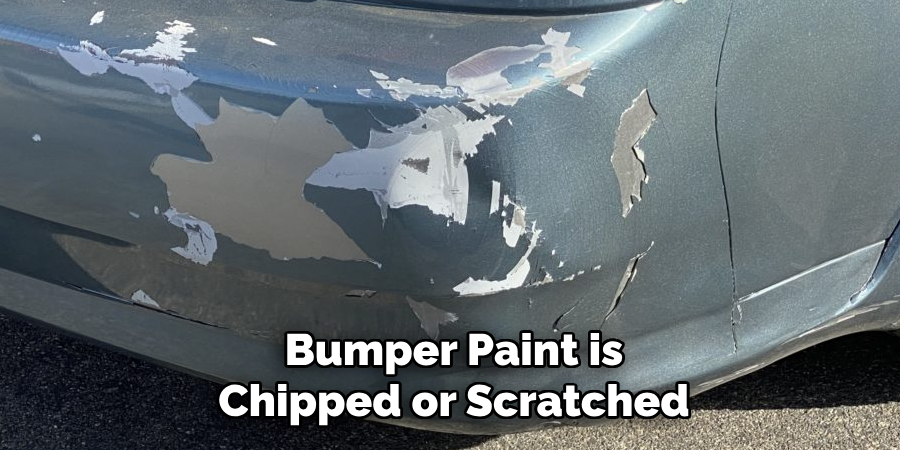
4. Neglecting to Check for Alignment Issues
After you’ve determined the bumper is aesthetically and structurally sound, you should address the final common identification mistake: alignment. A bumper that is properly aligned ensures its safety features are acting as intended and that the overall look of your car isn’t marred.
The Right Angles
One of the easiest ways to check for alignment issues is to simply look at the gaps between the bumper and adjacent body panels. If these gaps are uneven or if the bumper seems to be ‘off,’ it could indicate frame or other structural damage, which can be quite dangerous in the event of another collision.
Taking the time to address these four points when you suspect your bumper might be damaged can save you trouble down the line. It’s always best to err on the side of caution and have a qualified mechanic inspect your bumper if you have any doubts. Remember, a little prevention goes a long way when it comes to vehicle maintenance and safety.
Wrapping Up
It can be disconcerting to realize your car’s bumper is damaged, especially since it’s usually the first part of the vehicle to “take one for the team.” However, by staying vigilant and taking the steps outlined in this guide, you can keep your automotive ally in tip-top shape.
Whether you perform regular check-ups during cleaning sessions or conduct a thorough diagnostic after every visible impact, make sure you’re proactive about your bumper’s welfare. It’s a straightforward process that could make a world of difference regarding your vehicle’s performance, look, and safety.
And when in doubt, trust the experts to get you back on the road with a bumper you can count on. Thanks for reading our post about how to tell if your bumper is damaged.
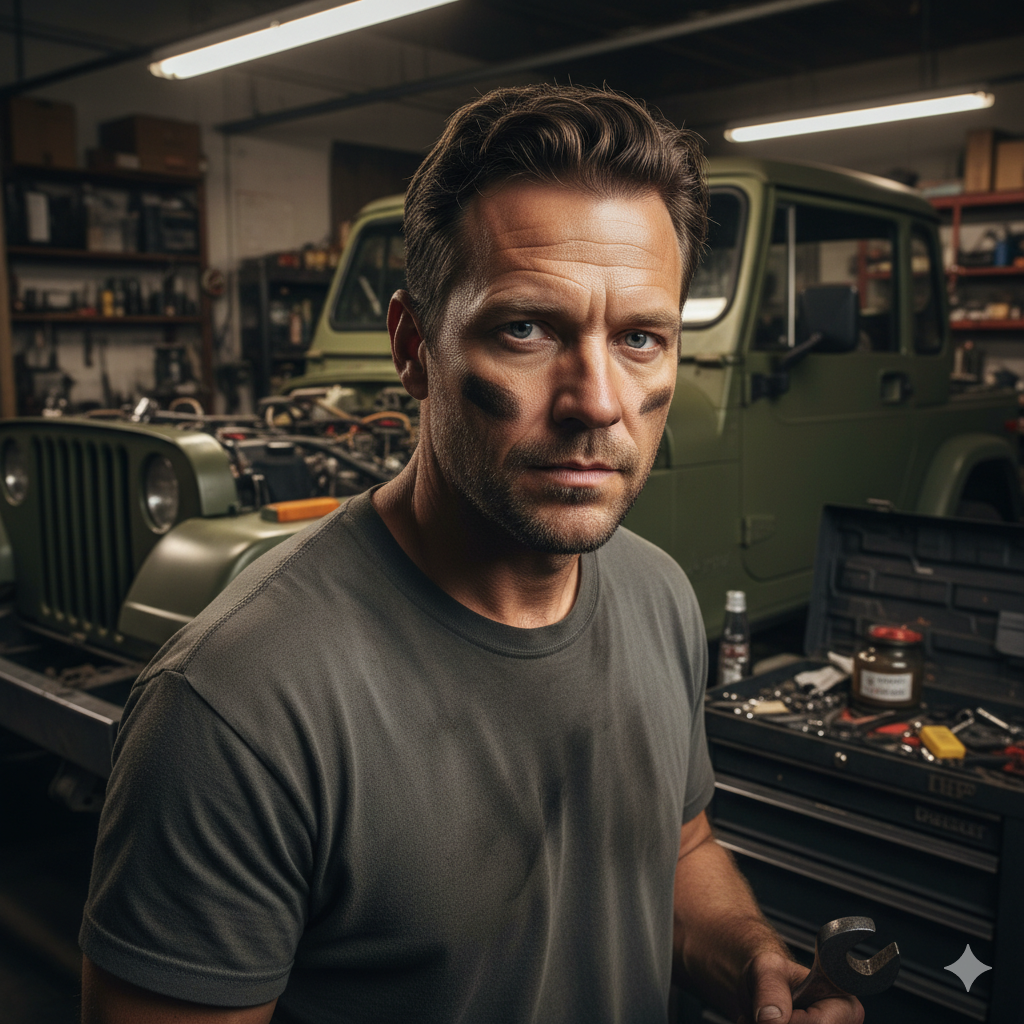
About
JeepFixes Team is a skilled author for Jeep Fixes, bringing 6 years of expertise in crafting a wide range of jeep fixes. With a strong background in jeep fixes work, JeepFixes Team’s knowledge spans various types of fixtures, from decorative pieces to functional hardware, blending precision with creativity. His passion for jeep fixes and design has made him a trusted resource in the industry.
Professional Focus:
Expert in Jeep Fixes : JeepFixes Team aesthetic specializes in creating durable and innovative jeep fixes, offering both appeal and functionality. His work reflects a deep understanding of jeep fixes techniques and materials.
Sustainability Advocate : He is dedicated to using sustainable practices, ensuring that every fixture is crafted with eco-friendly methods while maintaining high-quality standards.
In his writing for jeep fixes, JeepFixes Team provides valuable insights into the latest trends, techniques, and practical advice for those passionate about jeep fixes, whether they are professionals or DIY enthusiasts. His focus on combining artistry with engineering helps others discover the true potential of jeep in design.

